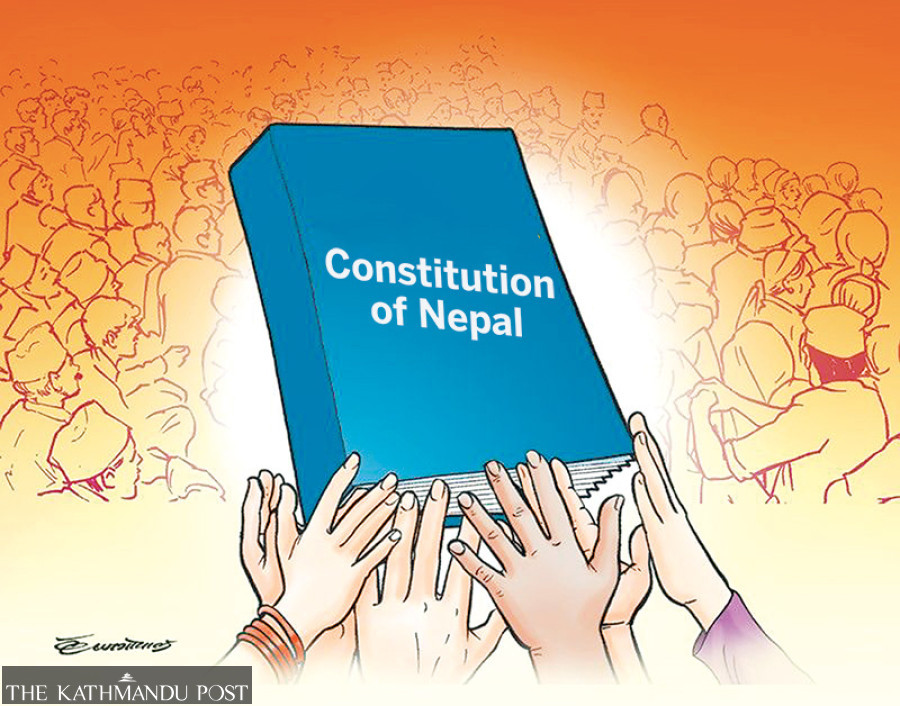Editorial
Talk and tweak
The constitution can be strengthened only through a broadly participatory process.
With the ruling parties—the Nepali Congress and the CPN-UML—starting the groundwork for the review and amendment of the constitution, the debate over the whole process is heating up. The ruling forces have rightly taken the initiative to implement the pledge they made while forming the coalition government over five months ago. They justified the ‘unusual coalition’ of two largest political parties saying it was the ‘only way’ the constitution could be amended.
The seven-point agreement between the Congress and the UML in July stated that the KP Sharma Oli-led government would give priority to making amendments to the constitution and formulating laws that ensure political stability by evaluating the strengths, weaknesses and the complexities witnessed during the course of its implementation in the past nine years.
A constitution should be a living document and flexibility on amendments and upgrades undoubtedly help with its sustainability. The constitution of India is often cited as an example in this regard. Promulgated by the Constituent Assembly of India in November 1949, the Indian constitution has been amended 106 times thus far. Likewise, many other democratic countries have succeeded in protecting their constitutions for long. The United States has been implementing the same one for the past 236 years.
But in the past seven and half decades, Nepal has already produced and implemented seven constitutions. As the debate on review and amendment of the current constitution picks up, the statute will complete just a decade in September 2025. So there are a few vital things Nepali politicians and constitutional experts need to keep in mind. It is vital to address the concerns and grievances of various political, social and other actors. But as important is to ensure that while addressing the demands of all and sundry, the foundations of the charter are not undermined.
Another major point the Congress-UML alliance vowed in the seven-point deal is to deliver political stability. Without constitutional stability, political forces can’t give political and policy stability. Though it’s not easy to garner the two-thirds majority required for constitutional amendment, the opposition parties have not ruled out their support for such a process. But they do appear wary of the prospect of the ruling alliance trying to bulldoze the process. If the ruling parties indeed try to forcibly push through such changes—for instance with the intent of obliterating small political parties—it would be a disaster. It will then make Nepali polity less rather than more stable.
The country has been facing various challenges in implementing the statute due to the failure to accommodate various political forces right at the start, when the charter was being finalised in 2015. The new initiative shouldn’t end up opening old wounds. For that, all political forces and stakeholders should be taken on board at every step of the new process. That is the only way to ensure the charter’s sustainability and to make it work as well.
Once the process starts and a body is entrusted with reviewing the statute, the demands raised by various groups and agendas put forth by different factions within the major parties will gradually take shape and the debate will enter a formal stage. Done prudently from the start, it can help make the national charter a potent document that can guide the country for a long-long time. Get it wrong, and the country could have to pay for it for perhaps even longer.




 10.12°C Kathmandu
10.12°C Kathmandu














